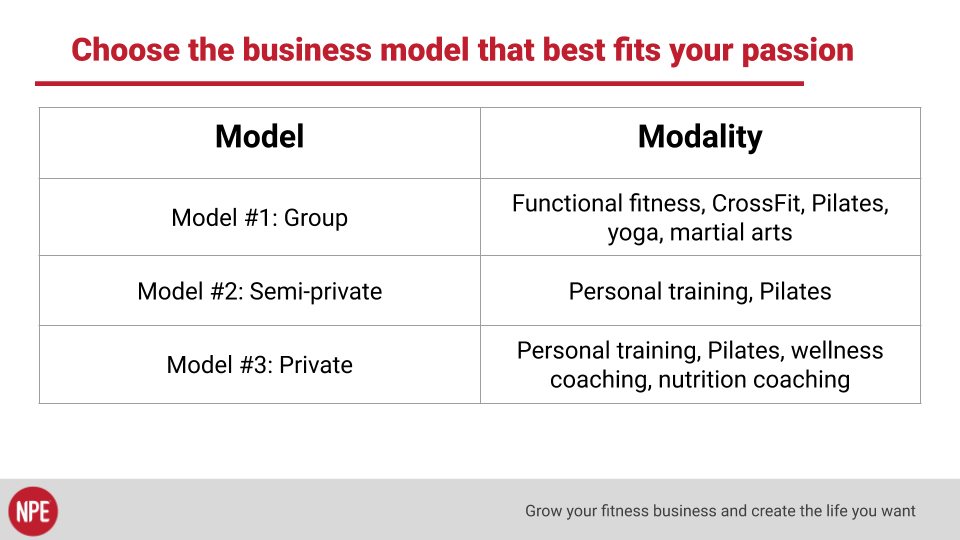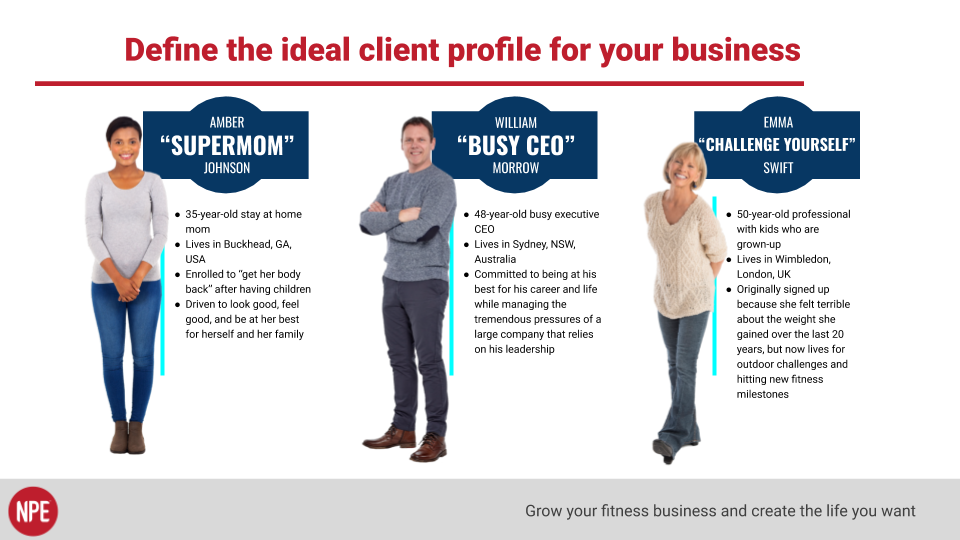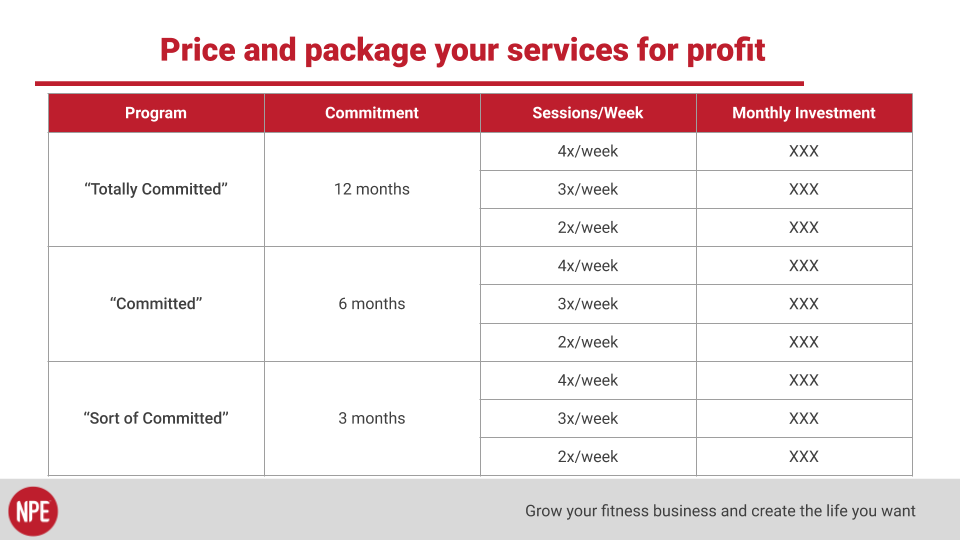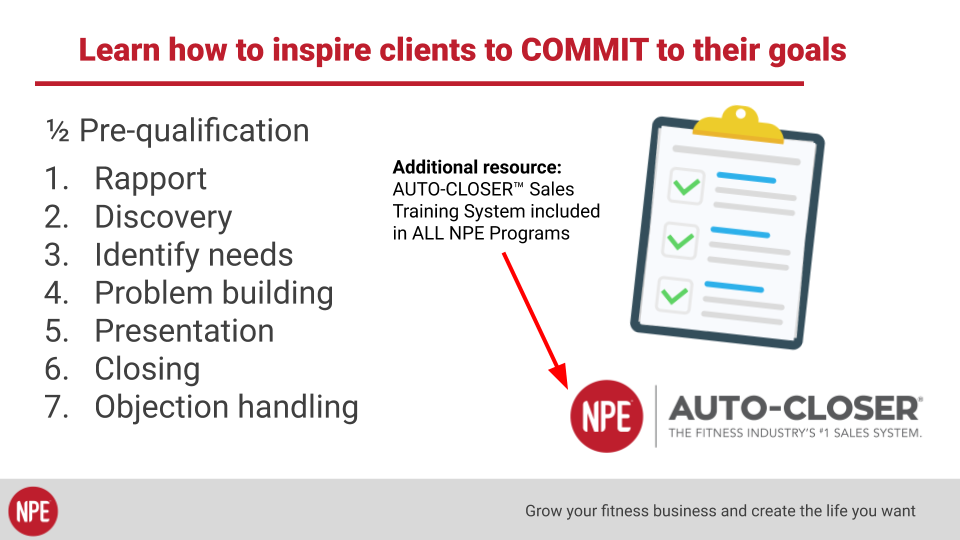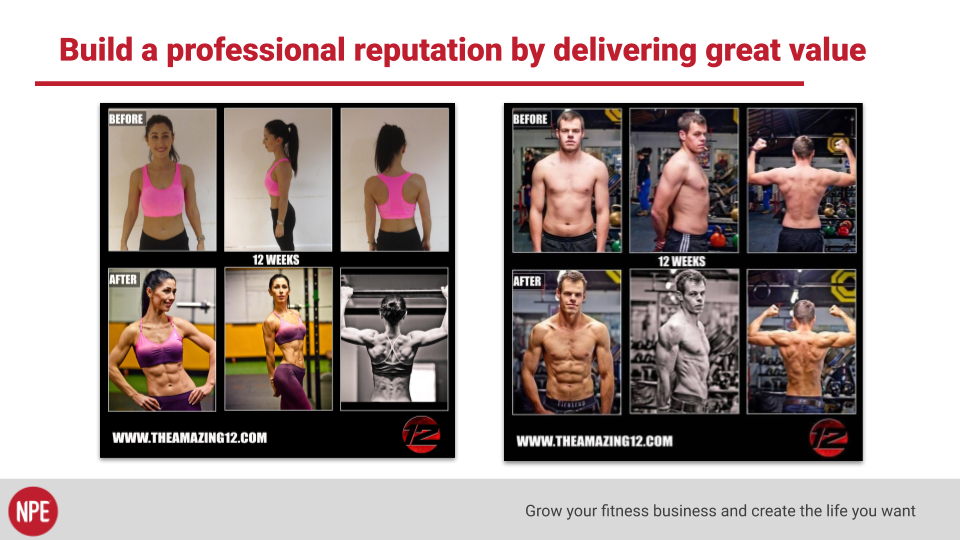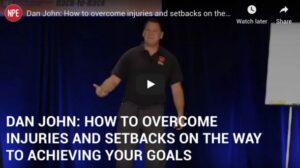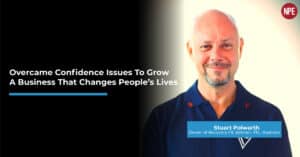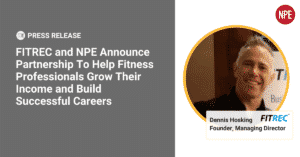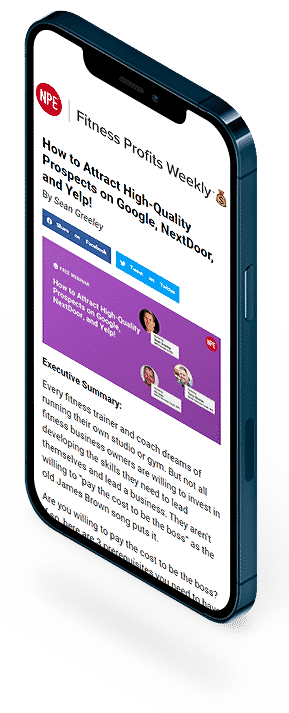7 Steps to Starting Your Own Fitness Business
By Sean Greeley
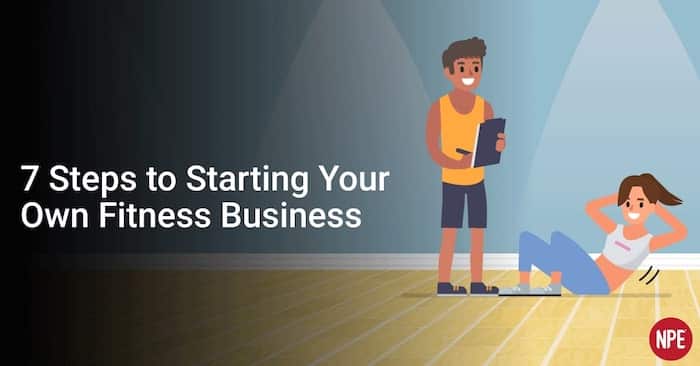
Do you dream of running your own fitness business, but you’re waiting for the right moment to pursue your dreams? Too many fitness professionals have those dreams but don’t act on them– they just play a waiting game, unsure how to get started and what to do next. But truth be told, what you need to do is commit to some essential strategic thinking and business planning. Read on to learn more.
+++++++++++++++++++++++++++++++
Do you dream of running your own fitness business?
If so, what’s stopping you?
Too many fitness professionals play a waiting game … and the REAL problem is they lack confidence in ability to start, operate, and grow a fitness business.
There’s a good reason for the fear: 81% of new fitness businesses close in their first 18 months because of a lack of business knowledge, according to a study cited by IHRSA.
That’s because most fitness professionals and business owners put the cart before the horse.
When they think about growing their business, the first thing that comes to mind is “I just need more leads and clients.”
And conventional thinking would tell you that makes sense.
Getting more leads allows you to get more clients, more clients equals more revenue, and more revenue solves problems that NOT having enough revenue creates. But that’s NOT where you need to begin if you really want to create long term success as a business owner.
Where you need to start is with understanding how to:
- Create a “platform for success” with the right business STRATEGY
- Clarify how you will deliver unique and powerful VALUE to the market
- Learn how to inspire prospective clients to COMMIT to their goals
These are the three keys not only get your business growing in the right direction, but will keep it on the right course to create SUSTAINABILITY.
In this article, we’ll cover seven steps to set yourself up for success when starting your business…
1. Define what success looks like for you as a business owner
Fitness studio owner-operators find themselves working IN the business so much that they don’t have time to step back and get clear on their “why?”
And when you’re extremely busy “wearing every hat” in the business, you need to know why you’re doing it.
What outcome do you want from your business?
What do you want to accomplish as a fitness business owner?
This is one of the most important questions you’re ever going to ask.
The answer is your “Owner Intent” and it’s the foundation of your entire business strategy.
Your Owner Intent is a statement that defines what success looks like for you in owning THIS business NOW.
Your business owner intent often includes desires for:
- Autonomy. We want to be our own bosses, and we want to be independent.
- Income. We will want greater financial security, greater financial gains, and to create wealth.
- Schedule flexibility. Fitness professionals get tied to other people’s schedules, and they get tired of it … you may want to take your child to football practice on 2 p.m. on Tuesday and not have my boss says you can’t leave until 5 because you have to sit in a cube.
- Growth potential. You may want to achieve big goals, push yourself to grow, do things that are hard, and to prove to yourself and others that you can meet the challenge of growing your fitness business.
- Sense of purpose. This is your impact, legacy, and emotional fulfillment of doing meaningful work. What is it and why is it important to you?
Now put some hard metrics around how you’ll measure success. You’ll need milestones that measure if you’re on track or off track, and how you are progressing. Usually, that’s an income goal.
For example, “I want to earn this much per month because that’s going to fund my lifestyle. I want to have THIS time where I work and THAT time when I don’t work … I want to have time freedom flexibility to enjoy my success … and I want to make an impact THIS way.”
Get clear on what that looks like for you.
2. Choose the business model that best fits your passion
How are you going to help clients achieve their health and fitness goals?
And how will you make a profit doing it?
The answer to the first question is what’s called your “modality”. It’s your mode of service delivery. Functional fitness, Yoga, Martial Arts …
The answer to the second question is your business model. Group training, semi-private, private training.
You have to pick a modality that gets results with clients, and a business model that is profitable.
You have to choose the right business model, refine the model, and set the model up for success.
That’s how you can really have great success with your passion.
If you’re spread across a couple of different things right now, you’ll need to refine both your model and your modality to work better and get focused.
3. Define the ideal client profile for your business
Who is the best client for you?
The more efficient you get at attracting your best client, the more clients you’ll have and the longer they’ll stay. Your best clients will be more fun to work with; everything in your business will just work better.
Ultimately, choosing your ideal client will determine a lot of the decisions you’ll make. These include refining your marketing messaging, your sales process, your packaging, your pricing–all the aspects of your fitness business change around the “who” you are going to serve.
- Are you training moms who want to get their body back after having kids?
- Are you training executives who want to be at their best for performing career, leadership responsibilities?
- Or maybe it’s a woman in their 50s, kids have left the house … it’s about getting time back for herself and improving her health, well-being, and fitness after years of putting other people first.
Whoever is your client, choose the client that you are most inspired to serve. That’s going to dictate a lot of these decisions around engineering your business plan for success.
4. Price and package your services for profit
Pricing, packaging, gross profit margins on your services and revenue streams are going to be critical to create profitability and sustainable cash flow in the business.
Below is a control we’ve been teaching since April 2010. We’ve tried to beat it many times, but over millions and millions of transactions, this has proven to be the best way to package and present your fitness services.
In this first column is your “program.” It’s important to call it a program. No one wants sessions. No one wants a pack of sessions. People want outcomes, and a session is just a way to get to an outcome. A program is made up of sessions that deliver an outcome.
Generally speaking, you want to name your program something benefited-oriented … something your market can identify with.
If you’re working with athletes, for example, you can name your programs “JV,” “Varsity,” and “Pro League”. Which do you want to be in if you’re an athlete? No one wants to be on the JV team. Everyone wants to be pro some day, so set an aspirational goal.
Brand your program names to the aspirational goals and benefits of the markets you’re serving, so clients can say, “Yes, that’s where I want to go.”
The second column is “Commitment.” That refers to the length of time required to achieve someone’s goal.
You really want to align your packaging to the goals and needs of the client. 5-pack of sessions doesn’t mean anything if someone wants to lose 100 pounds. They’re going to have to commit to a length of time of output and energy and focus to achieve that goal.
And if you’re not leading clients to make decisions tied to commitments that lead them to accomplishing their goals on their journey, I would challenge that you’re not a very effective coach if you’re not a leader.
This is where the magic happens–in our leading and inspiring commitment to change. And leading people to the commitments, time length, and work required to achieve their goals.
When we do that, all the other things we teach have value.
The third column is the sessions per week required to achieve the goal through your programming.
And in the last column your price — the investment required. We recommend presenting price as a monthly investment, especially in the U.S. because that’s how we’re trained to buy goods and services. You have a monthly cell phone bill, monthly car payments, etc. It’s a way for people to make quick buying decisions because people budget monthly and they’ll know if they can afford it.
5. Get specific strategies and systems to find (and sign up) new clients
You need a strategic plan to generate the right leads.
Where does your market show up? What are the ways you can make them offers and inspire them to move forward, and communicate in a powerful way to engage them?
These are all parts of your marketing plan.
It’s really about getting the right message, the right offer, and the right sales process all aligned so you can do the right lead generation strategies to serve the right clients.
Since 2006, we’ve taught the AUTO-CLOSER® sales system, which has generated about $575 million in total fitness sales globally during that time.
This is a 7½ step process we teach to lead and inspire commitments to change.
Ultimately, this is the most valuable skill you’re going to learn. Whether you’re a coach or leading a team or you’re leading clients, leading a commitment to change is where the magic happens.
The most important thing is that you have a process you can take people through so that people who can afford you can make a buying decision and achieve their goals.
Remember: It’s not about you, it’s not about your programs. Truth be told, nobody cares about your (or anyone else’s) programs. They care about their own problems and their own goals.
Show them what their needs are, what the problems are, and show them a path forward to create that change and ultimately, lead them to make a commitment that’s tied to their best interests … while becoming a client of yours.
This is a very powerful program. We’ve had people go from $2k a month and 3-4 months later they go to $20k a month.
And of course then they have a new set of problems, which is they need more space, hire coaches, all because they learned to inspire people to commit to their goals.
6. Build a professional reputation by delivering great value
How do you build a portfolio that really demonstrates great value and a professional reputation for your company and brand?
One of our clients do body transformation programs called Amazing 12 … and you can see in the before and after photos.
If you can show change and your market is people who want to have physical change, then you can show the outcomes–they were fat (or soft), now they’re shredded.
This is all you have to do — show people “This is where people come in and this is what happens.”
If you deliver great value, everybody wants to be your client. In the case of one our clients (and partners) the Amazing 12, the client’s results are so good they often fill up their schedule simply by word of mouth.
When clients are so happy about their results, retention goes up, you’ll be making the impact you want, and if you set up and manage the business side right, you’ll be meeting your financial goals.
7. Establish portfolio of client success stories and positive reviews
We live in a trust-based economy.
It’s more important than ever what other people say about you.
You need to manage your digital brand, and curate that, over time.
Focus on consistently delivering extreme value and results, testimonials and referrals will come.
Document client results and share stories to continue growing. People connect with people and stories (seeing themselves in your past clients).
People care more about what OTHERS have to say about working with you than anything you have to say about yourself. People don’t care about what you say about yourself, they care what others have to say about you.
Today the first thing people do is go to Yelp, Google, Facebook and look at the reviews of your business. They look at the good, the bad, and they look at how you handle replies.
How do you reply to negative things? This is actually an opportunity to demonstrate your expertise and professionalism.
Next Actions
At NPE, we have guided tens of thousands of fitness professionals to start and grow their own fitness businesses.
They started with a dream and took the steps to make it a reality. Our clients become experts in inspiring others to make commitments to health and fitness goals … and then are ready to grow their company from there.
To learn more about starting and growing your fitness business, schedule a call with an NPE Success Coach.
Our NPE Success Coaches have all “been there, done that” in the fitness industry and now they’re bringing their expertise to help fitness business owners like yourself clear away their biggest obstacles and show a new path forward.
Don’t let excuses such as “I don’t have the background in sales, marketing, finance and business strategy” stop you. Winners don’t avoid challenges; they face them head on.
Take charge of upgrading your skills by scheduling a call with an NPE Success Coach today. And then get ready to grow your fitness business and create the life you want.


